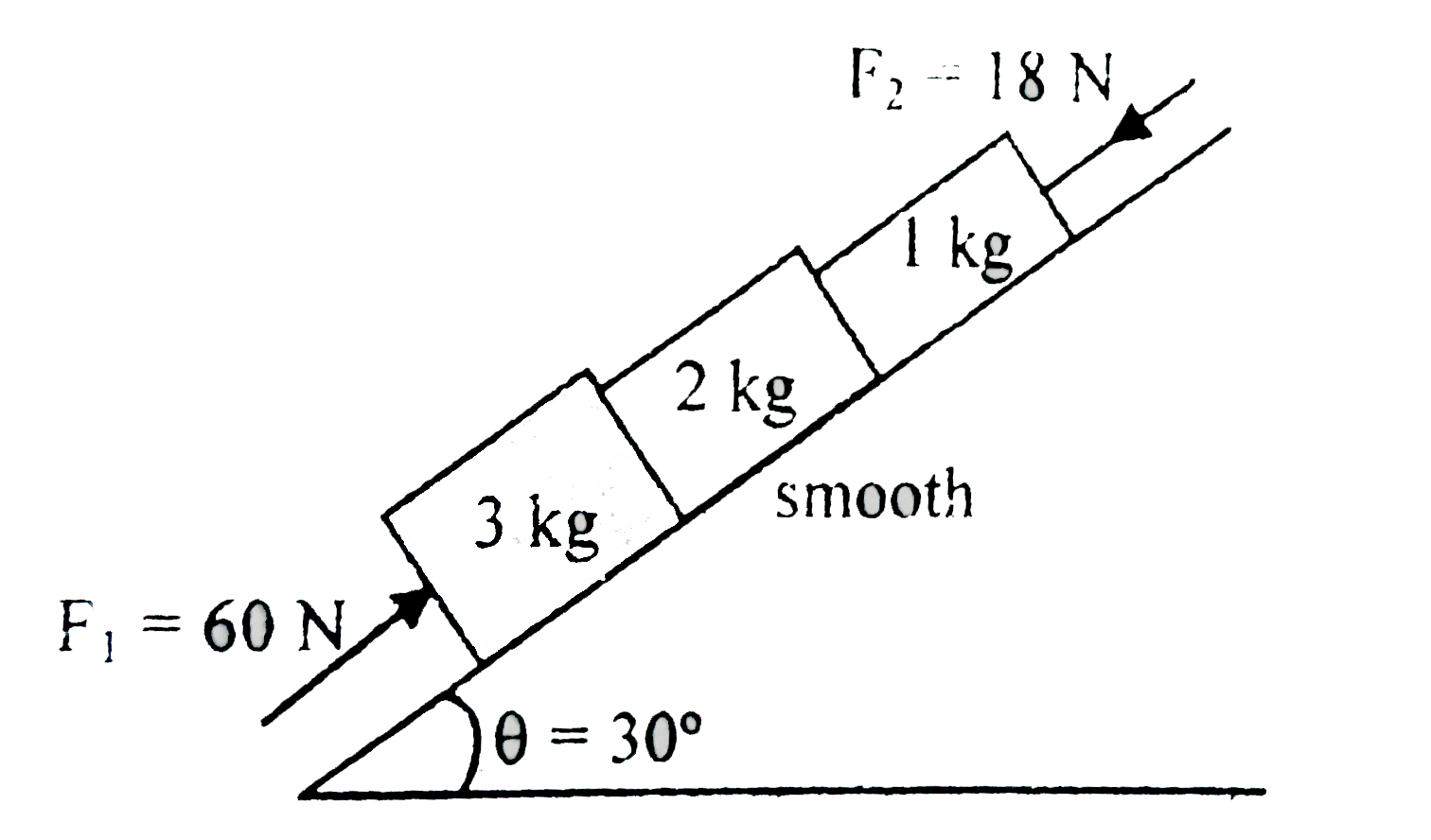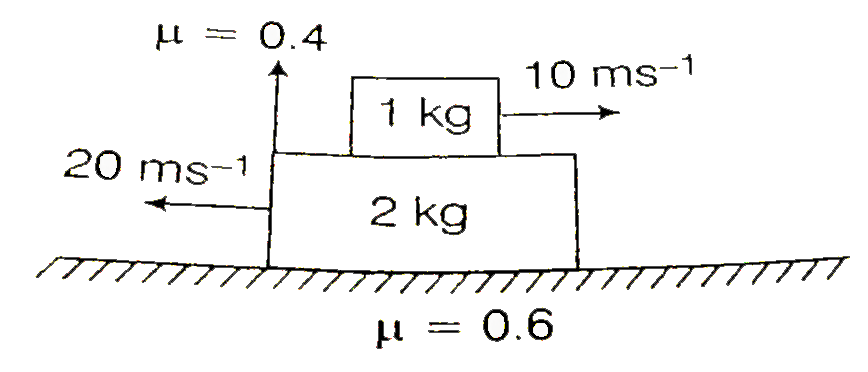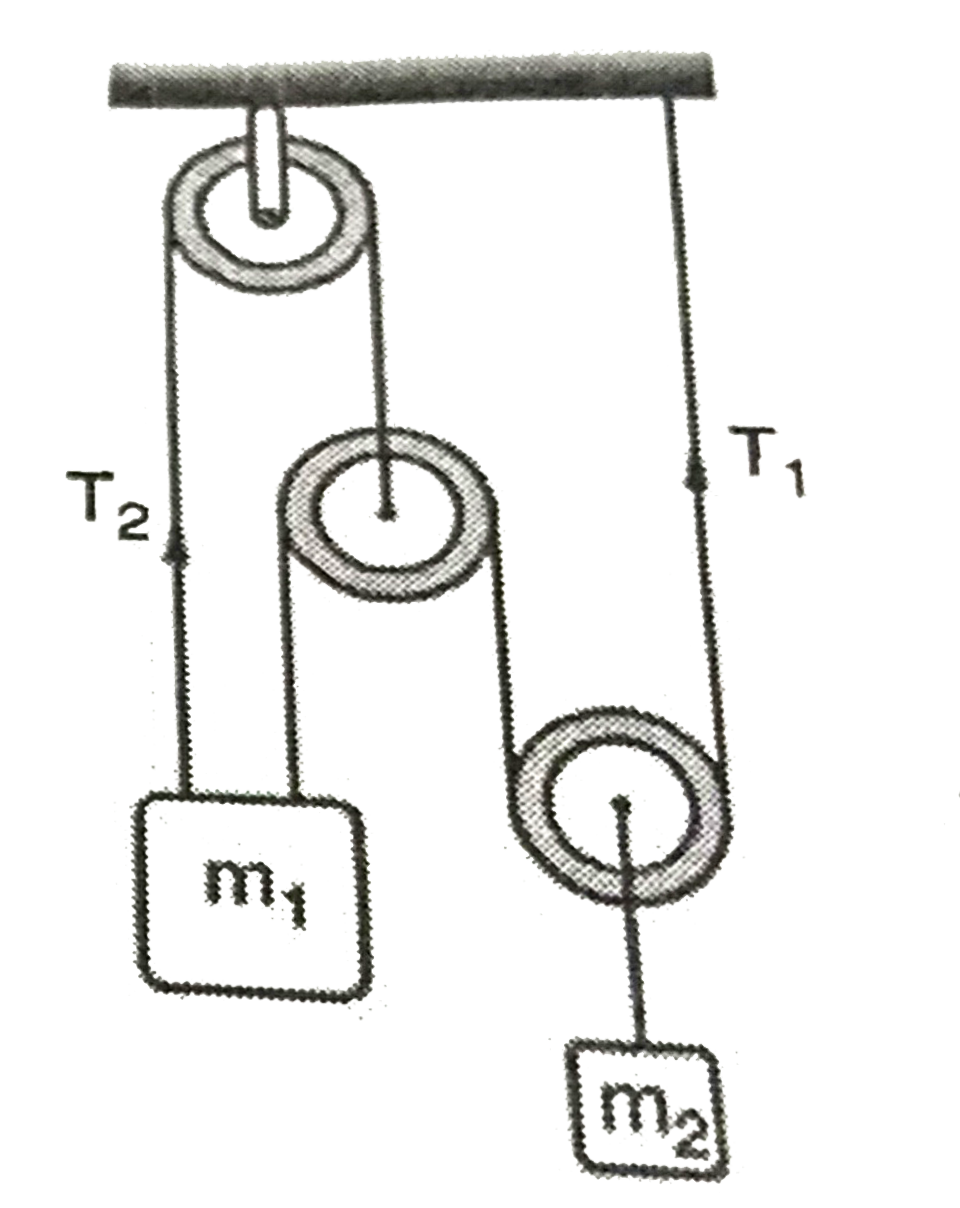In the diagram shown in figure, match the following columns (take )

The correct Answer is:Aq,Bp,Cs
Since, block will move and kinetic friction will act,
Topper's Solved these Questions
- LAWS OF MOTIONBOOK - DC PANDEYCHAPTER - LAWS OF MOTIONEXERCISE - Medical entrances gallery
39 Videos
- LAWS OF MOTIONBOOK - DC PANDEYCHAPTER - LAWS OF MOTIONEXERCISE - Assertion and reason
28 Videos
- KINEMATICS 1BOOK - DC PANDEYCHAPTER - KINEMATICS 1EXERCISE - INTEGER_TYPE
15 Videos
- LAWS OF THERMODYNAMICSBOOK - DC PANDEYCHAPTER - LAWS OF THERMODYNAMICSEXERCISE - Level 2 Subjective
18 Videos
Similar Questions
In the diagram shown in figure, match the following (g=10m/s2)

Column-IColoumn-II(A)Acceleration of 2kg block(P)8 Si unit(B)Net force on 3kg block(Q)25 SI unit(C)Normal reaction between 2 kg and 1kg(R)2 SI unit(D)Normal reaction between 3 kg and 2kg (S) 45 SI unit(T) None
View SolutionIn the diagram shown in figure, match the following (g=10m/s2)

Column-IColoumn-II(A)Acceleration of 2kg block(P)8 Si unit(B)Net force on 3kg block(Q)25 SI unit(C)Normal reaction between 2 kg and 1kg(R)2 SI unit(D)Normal reaction between 3 kg and 2kg (S) 45 SI unit(T) None
View SolutionIn the diagram shown in figure. Match the following columns.

Colmun IColumn II(A) Absolute acceleration of 1 kg block(p)11ms−2(B) Absolute acceleration of 2 kg block(q)6ms−2(C) Relative acceleration between the two(r)17ms−2(s)None
View SolutionIn the diagram shown in figure. Match the following columns.

Colmun IColumn II(A) Absolute acceleration of 1 kg block(p)11ms−2(B) Absolute acceleration of 2 kg block(q)6ms−2(C) Relative acceleration between the two(r)17ms−2(s)None
View SolutionA balloon rises up with constant net acceleration of 10m/s2. After 2 s a particle drops from the balloon. After further 2 s match the following : (Takeg=10m/s2)
Column IColumn II(A)Height of perticle from ground(p)Zero(B)Speed of particle(q)10SIunits(C)Displacement of Particle(r)40SIunits(D)Acceleration of particle(s)20SIunits
View SolutionA balloon rises up with constant net acceleration of 10m/s2. After 2 s a particle drops from the balloon. After further 2 s match the following : (Takeg=10m/s2)
Column IColumn II(A)Height of perticle from ground(p)Zero(B)Speed of particle(q)10SIunits(C)Displacement of Particle(r)40SIunits(D)Acceleration of particle(s)20SIunits
View SolutionA particle of mass 1 kg is projected upwards with velocity 60ms−1. Another particle of mass 2kg is just dropped from a certain height. After 2s, match the following.
[Take, g =10ms−2]
column1column2Accelertion of CMP ZeroB Velocity of CMQ 10 SI unitC Displacement of CM20 SI unit-S None
View SolutionTwo blocks of masses m1=5 kg and m2=2 kg are connected by threads which pass over the pulleys as shown in the figure. The threads are massless and the pulleys are massless and smooth. The blocks can move only along the vertical direction T1andT2 are the tensions in the string as shown. Now match the following: (Takeg=10m/s2)

Column -IColumn -II(a)Magnitude value ofacceleration of m1 with respect to ground(p)50019SI units(b)Magnitude value ofacceleration ofm2with respect to ground(q)25019SI units(c)The value of tensionT1(r)6019SI units(d)The value of tensionT2(s)4019SI units(t)None of the above
View SolutionMatch the following columns.
Column IColumn II(A) Force of friction(p) Oppose motion(B) Normal reaction on a block kept on horizontal ground(q) Oppose relative motion(r) Is always mg(s) May be equal to mg(t) None
View SolutionMatch the following columns.
Column IColumn II(A) Force of friction(p) Oppose motion(B) Normal reaction on a block kept on horizontal ground(q) Oppose relative motion(r) Is always mg(s) May be equal to mg(t) None
View Solution
